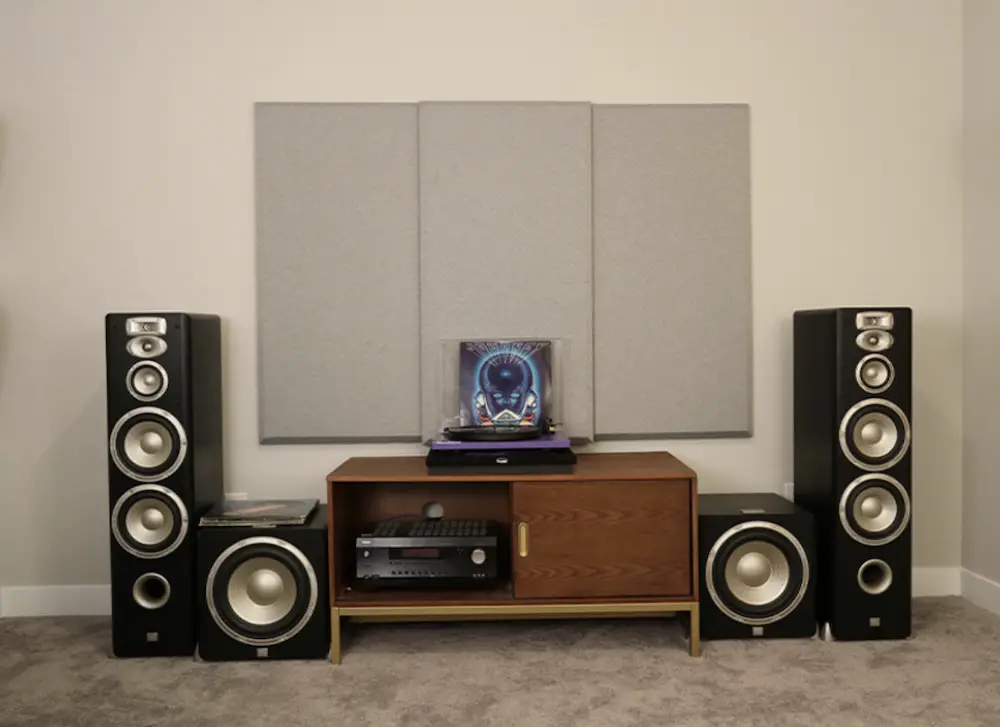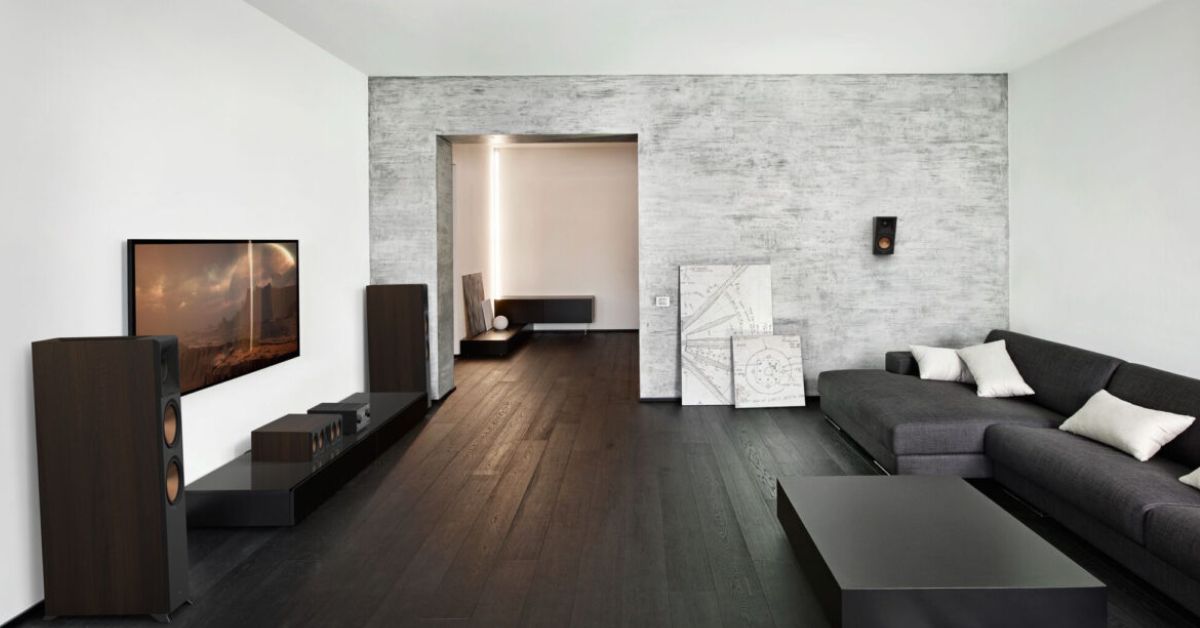Creating the perfect home theater experience involves careful consideration of various components, and one crucial aspect is the number of speakers.
The audio setup plays a pivotal role in immersing you in the cinematic world, enhancing your overall viewing pleasure.
In this article, we’ll get into the factors that influence the ideal number of speakers for your home theater system, exploring the intricacies of speaker configurations, room acoustics, and the evolving landscape of audio technology.
Understanding Speaker Configurations
1. Stereo vs. Surround Sound
The foundation of any home theater system is the choice between stereo and surround sound configurations. Stereo setups utilize two speakers, typically placed on either side of the viewing area, providing a two-channel audio experience. While stereo systems are simpler and cost-effective, they may lack the immersive depth of surround sound.
On the other hand, surround sound systems use multiple speakers to envelop the audience in a three-dimensional audio environment. Common configurations include 5.1 (five speakers and a subwoofer) and 7.1 (seven speakers and a subwoofer), with additional speakers contributing to an even more intricate soundscape.
2. Immersive Audio Technologies
Advancements in audio technology have introduced immersive audio formats such as Dolby Atmos and DTS:X. These systems go beyond traditional surround sound, incorporating height channels to create a more lifelike and enveloping audio experience. Dolby Atmos, for instance, can support configurations like 5.1.2 or 7.1.4, indicating the number of surround speakers and overhead speakers, respectively.
Choosing between stereo, traditional surround sound, or immersive audio depends on your preferences, room size, and budget. Stereo setups may suffice for smaller spaces, while larger rooms benefit from the immersive quality of surround sound or advanced formats like Dolby Atmos.
Room Size and Acoustics
1. The Impact of Room Size
The size of your home theater room significantly influences the optimal speaker configuration. In smaller spaces, a stereo setup or a basic 5.1 surround sound system might be adequate, as the sound waves have less distance to travel and can bounce off walls more effectively. However, larger rooms may require additional speakers to fill the space and maintain audio balance.

Consider the dimensions of your room and aim for a speaker setup that ensures even coverage. Experimenting with speaker placement and configurations can help find the sweet spot where sound distribution is optimized for your specific room size.
2. Acoustic Challenges
Room acoustics play a crucial role in determining how sound interacts within a space. Factors like wall materials, furniture, and even the presence of curtains can impact sound reflections and absorption. Hard surfaces tend to reflect sound waves, potentially leading to echoes and an uneven audio experience. Conversely, softer surfaces absorb sound, potentially dulling the overall audio quality.
To address acoustic challenges, consider acoustic treatments such as wall panels, bass traps, and rugs. These elements help control sound reflections and enhance the clarity of your audio system. Understanding how your room’s acoustics interact with your speaker setup is key to achieving optimal sound quality.
Listener Preferences and Usage Patterns
1. Tailoring to Personal Preferences
Your personal preferences and the primary use of your home theater system should guide your speaker selection. Some individuals prioritize a pure and simple stereo setup for music enjoyment, while others crave the immersive experience of surround sound for movies and gaming.
Consider your preferences and the types of content you frequently consume. If movies are a priority, a surround sound or Dolby Atmos setup might be more suitable. For music enthusiasts, a high-quality stereo configuration may be the preferred choice.

2. Multi-Functional Spaces
Many homeowners use their living rooms for multiple purposes, including TV viewing, gaming, and entertaining guests. In such cases, a versatile speaker setup that accommodates various audio scenarios is ideal. Systems with adjustable configurations or customizable presets can provide the flexibility needed for diverse usage patterns.
Budgetary Considerations
1. Balancing Performance and Cost
While it’s tempting to aim for the most advanced and feature-rich speaker setup, budget considerations are a significant factor. Fortunately, there are quality speakers available at various price points, catering to both entry-level and high-end budgets.
Prioritize your spending based on the aspects that matter most to you. If audio quality is paramount, allocate a larger portion of your budget to speakers with exceptional sound reproduction capabilities. Conversely, if you’re on a tight budget, there are still reliable options that can deliver a satisfying audio experience without breaking the bank.
2. Incremental Upgrades
Building the perfect home theater doesn’t have to happen overnight. Consider starting with a basic setup and gradually upgrading over time. Begin with a stereo or 3.1 system and expand as your budget allows. This approach allows you to assess the impact of each upgrade on your overall audio experience and make informed decisions based on your evolving preferences.
Future-Proofing Your System
1. Keeping Pace with Technology
The world of audio technology is dynamic, with constant advancements and innovations. When selecting your speaker configuration, consider the future-proofing aspect. Invest in a system that supports upgradability, ensuring compatibility with emerging audio formats and technologies.
Immersive audio formats like Dolby Atmos and DTS:X are gaining popularity, and future content may be optimized for these systems. Choosing a system that can adapt to these changes ensures that your home theater remains relevant and capable of delivering a cutting-edge audio experience.
2. Wireless and Smart Features
Wireless technology and smart features are becoming integral components of modern home theater systems. Wireless speakers eliminate the need for cumbersome cables, providing greater flexibility in speaker placement. Smart features, such as voice control and integration with virtual assistants, enhance the user experience.
When exploring speaker options, consider models that incorporate wireless connectivity and smart capabilities. These features not only contribute to a clutter-free setup but also position your home theater for seamless integration with evolving smart home ecosystems.
The Bottom Line
Determining the ideal number of speakers for your home theater system involves a thoughtful analysis of various factors, including speaker configurations, room size, personal preferences, budget constraints, and future-proofing considerations. Striking the right balance ensures an immersive and tailored audio experience that complements your entertainment needs.
Whether you opt for a minimalist stereo setup, a traditional surround sound system, or embrace the latest immersive audio technologies, the key is to create a harmonious audio environment that elevates your home theater to new heights.
By understanding the intricacies of speaker configurations and considering the unique aspects of your space and preferences, you can embark on a journey to craft a home theater experience that captivates the senses and transports you into the heart of your favorite movies, music, and games.

